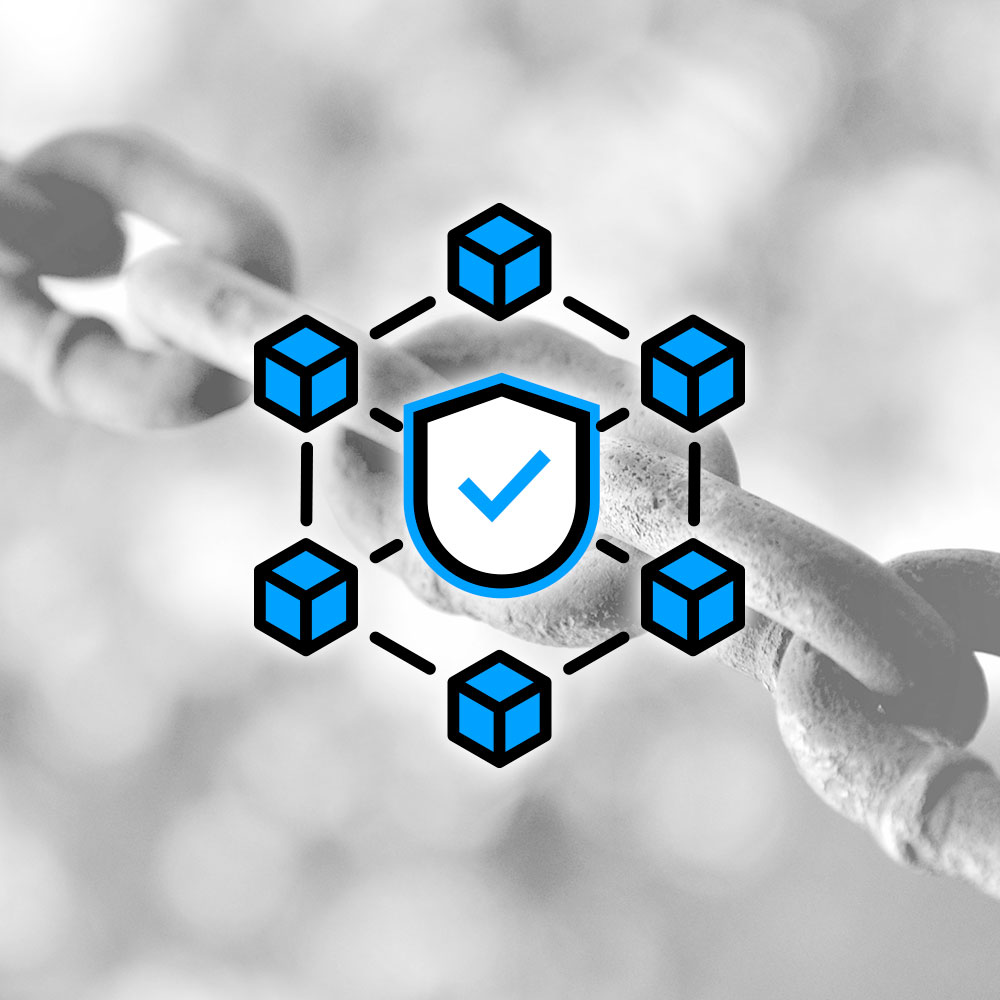The growing popularity of blockchain technology is transforming how we approach data privacy and consent management.
Blockchain consent management provides a secure and transparent solution that empowers users to control their personal data. By leveraging the properties of blockchain technology, it provides an accountable and efficient way to handle permissions to access personal data.
This shift represents not just an upgrade in technology from previous consent management options, but a fundamental change in how we think about data privacy and control.
What is blockchain consent management?
Blockchain consent management provides a way to handle user data permissions securely and transparently. It’s a digital system that gives users control over how their personal information is used online. It acts like a customizable, trackable permission slip, enabling individuals to decide exactly what data to share, with whom, and for what purpose.
Unlike traditional agreements that rely on more broad, potentially vague consent, this system offers more precision.
Every consent action, like granting or withdrawing permission, is securely recorded on a blockchain ledger. A blockchain ledger is like a shared digital spreadsheet that exists simultaneously on many computers.
Everyone has the same updated information, and no single person can change it without everyone else knowing.
This means that the records are tamper-proof and easy to track. Companies can only access data if the user explicitly allows it. This helps organizations meet the requirements of privacy regulations, like the General Data Protection Regulation (GDPR), while giving users greater control.
Furthermore, the blockchain’s distributed ledger supports transparency and accountability, while smart contracts — known as self-executing digital agreements — automatically enforce consent rules. These “if/then” rules trigger actions only when specific conditions are met.
For example, a smart contract could automatically block a marketing company from using your personal data if you withdraw consent, instantly removing their access rights. When you update your preferences, the contract immediately enforces your wishes, preventing unauthorized data usage without requiring manual intervention.
This system reduces human error and simplifies compliance by helping to ensure data access happens only when the user’s requirements are fulfilled.
Blockchain consent management versus traditional consent management systems
Traditional consent management systems are like filing cabinets where a company stores user permissions. You, as a user, typically agree to terms by clicking “I accept,” and the company keeps track of your consent in its own database. These systems are straightforward but have limitations in both transparency and user control.
Blockchain consent management is more advanced. Imagine a shared, digital ledger where every consent decision is recorded in a way that everyone can see, and that can’t be easily changed except by the relevant party making the consent decisions.
This gives individuals more visibility into how their data is being used, and prevents companies from secretly modifying or ignoring users’ permissions.
The key differences lie in control and transparency. Traditional consent systems rely on companies to manage and track user permissions. This does work, but can leave users with limited visibility into how their data is used.
Blockchain consent gives the user more say in how their information is shared. Relevant parties — users, companies requesting the permissions, third parties needing access to the data for processing — can see exactly who has accessed the data, when, and for what purpose.
Security is another key difference. Traditional systems are centralized, meaning data is stored in one place and subject to one company’s security measures, which can make it more vulnerable to unauthorized access.
In contrast, the blockchain distributes information across multiple secure networks. This reduces the risk of a single point of failure and makes it harder to compromise any user’s data.
The benefits of blockchain for consent management
Blockchain consent management has the power to reshape the way companies handle user permissions. It solves some of the issues found in traditional systems by combining secure technology with features that benefit both users and businesses.
Here’s why companies are adopting blockchain for consent management.
Blockchain consent is decentralized and offers data integrity
The blockchain distributes data across multiple nodes, which reduces the risks of breaches or system failures. Since consent records are stored permanently, they can’t be altered without detection. This helps keep data secure and builds trust.
Consent management on the blockchain is transparent and auditable
Every consent action is recorded in the equivalent of a transparent ledger. This makes it easy for users and regulators to track compliance. Organizations can also use this record to demonstrate compliance with privacy laws like the GDPR. This transparency can foster trust and reduce disputes over data use.
Blockchain offers more user control and privacy
Blockchain enables users to control exactly what data they share, with whom, and for what purpose. This is foundational for Privacy-Led Marketing, which focuses on ethical and user-centered practices. For businesses, it means having access to more accurate, consent-driven data that improves the efficiency of marketing campaigns.
Consent on blockchain enables granular consent settings
On blockchain, users can set detailed preferences, specifying which data points they share and who can access them. This level of control supports universal consent management by enabling users to manage permissions across multiple platforms. This helps businesses align their data use with user expectations and build stronger customer relationships.
Blockchain uses smart contracts for automation
Smart contracts automatically enforce consent rules based on user preferences. They restrict data access to agreed parameters, reducing compliance risks. This automation also makes consent-based marketing easier by streamlining permission management.
Blockchain consent management provides real-time verification
Blockchain enables businesses to verify user consent instantly. They can then use data according to the latest permissions, improving operational efficiency. As blockchain also supports Privacy-Led Marketing, companies can rely on verified first-party consent.
How does blockchain consent management work?
Blockchain consent management offers a secure, transparent way to control how your personal information is used. Instead of relying on vague agreements or hidden terms, blockchain consent records and enforces your choices, and makes them easy to track. Here’s how it works:
- When you grant permission for a company to use your data, your choices are securely recorded on the blockchain.
- This record acts like a digital ledger, shared across multiple computers. This makes it nearly impossible to alter that record without your knowledge.
- You can decide exactly what data to share and with whom, which offers more precision than simply clicking “I agree.”
- Smart contracts enforce your consent choices, maintaining compliance without manual oversight.
- Every time someone accesses your data, it’s logged in the consent management of the blockchain. It creates a transparent history you can check anytime.
- If you change your mind, you can easily update your permissions, and the system will automatically follow your new preferences.
This approach puts the user in control of their personal information while giving companies a straightforward way to prove they’re respecting their audience’s wishes.
How to implement blockchain consent management: Best practices
Using blockchain for consent management can improve data control and security, but getting it right requires careful planning. Here are some best practices to keep in mind.
Understand your organization’s consent needs
Start by identifying your organization’s specific consent requirements. Understand what types of data you manage and how consent is collected, stored, and used. Align these needs with your operational goals to help ensure the blockchain solution fits your processes.
Choose the right blockchain platform
Pick a platform that suits your company’s needs. Public blockchains like Ethereum offer transparency, but may not be suitable for sensitive data. Private blockchains, such as Corda — a popular option in the financial sector — provide more control and customization. This can be useful for compliance-heavy industries.
Confirm that it integrates with existing systems
Verify that the blockchain solution works well with your current systems to avoid operational disruptions. In addition, check that databases and interfaces can support blockchain’s distributed structure.
Provide user-friendly interfaces
The success of blockchain consent management depends on its usability. The system and its layout should be easy for your audience to use. This means creating simple dashboards where users can manage their data permissions. Work with user experience experts to design intuitive tools that simplify complex blockchain processes.
Educate stakeholders
Blockchain can be complex. Offer training sessions, workshops, or guides to help stakeholders understand its benefits. Clear communication builds trust and encourages adoption across your organization.
Use enhanced privacy tools
Employ technologies like encryption and zero-knowledge proofs to protect sensitive data stored on the blockchain. This keeps data secure while maintaining the transparency of the system.
Test and plan for scalability
Before rolling out a blockchain system, test it thoroughly before launching. Identify potential issues, such as slow performance or security risks. Plan for future growth by designing a system that can handle more users and transactions over time.
Implement smart contracts
Use smart contracts to automate blockchain consent management processes. These contracts can define terms, track permissions, and revoke access when needed. Make sure that the code is secure and reliable before deployment.
Continuously monitor and improve
Regularly review how the system performs and gather user feedback. Based on new data privacy regulations, implement mechanisms for users to easily adjust their consents and opt out when necessary. Make updates as needed to improve functionality and address issues that arise over time.
Blockchain consent management and data privacy regulations
As data privacy laws tighten worldwide, many companies are seeking simpler ways to stay compliant. Blockchain consent management offers a solution that enhances compliance without disrupting operations.
Different regulations have unique requirements. Here’s how blockchain can address the specific demands of global data privacy laws.
GDPR compliance and blockchain consent management
The GDPR in the European Union sets high standards for data privacy. It emphasizes user consent and control over personal data. Blockchain technology aligns with several GDPR principles, including data minimization, transparency, and accountability.
Blockchain technology provides a secure and transparent way for organizations to keep records of consent transactions. Once recorded, these records cannot be changed, making them resistant to tampering. This helps organizations easily track and prove compliance with regulatory requirements.
However, the GDPR also presents challenges that blockchain technology does not address. The regulation’s “right to be forgotten” requirement conflicts with blockchain because its records cannot be easily changed or deleted. To solve this, many companies use hybrid solutions. This typically means keeping personal data outside the blockchain while storing only consent-related information on it.
Data privacy laws across the US
The United States does not have a single federal privacy law equivalent to the GDPR. However, state-level regulations like the California Consumer Privacy Act (CCPA), now amended by the California Privacy Rights Act (CPRA), introduced requirements for user consent and data control. Blockchain-based consent management systems could offer a tamper-proof record of user permissions, enabling businesses to demonstrate compliance with the CCPA’s requirements for data collection, deletion, and opt-out requests.
PIPEDA and blockchain in Canada
The Personal Information Protection and Electronic Documents Act (PIPEDA) in Canada emphasizes the importance of user consent for data collection and processing. Blockchain can support PIPEDA’s principles of accountability and individual access by offering a decentralized and user-centric consent management system.
LGPD compliance and blockchain in Brazil
Brazil’s General Data Protection Law (LGPD) closely mirrors the GDPR in its approach to data privacy. It mandates that personal data processing must be based on consent or other legal grounds, and individuals have the right to access, correct, and delete their data.
Blockchain technology can support a company’s efforts to be LGPD-compliant by providing transparency and security in consent management. However, like with the GDPR, blockchain’s permanent nature makes it difficult to delete data upon request. To comply with the law, companies may need to use off-chain solutions.
Data privacy regulations in Asia
Privacy regulations throughout Asia, such as Japan’s Act on the Protection of Personal Information (APPI) and China’s Personal Information Protection Law (PIPL), impose strict requirements on data handling and user consent.
In Japan, organizations must obtain clear user consent before processing personal data, and blockchain can provide a transparent and auditable method to record such consent.
In China, the PIPL mandates strict data localization requirements. This means that blockchain consent solutions must support compliance by storing consent data in approved locations while maintaining operational efficiency.
The challenges of using blockchain for consent management
At this point, blockchain may appear to be a promising solution for consent management. However, despite its potential, several challenges must be addressed within the technology before it can become a practical option for businesses.
- Data storage and deletion: Blockchain isn’t designed to store large amounts of personal data, and its permanent nature makes it difficult to comply with privacy laws that require data to be deleted on request.
- Privacy concerns: Public blockchains can expose sensitive information, raising privacy risks. Private blockchains provide more control, but come with added complexity and costs.
- Regulatory uncertainty: Existing privacy laws weren’t created with blockchain in mind, leading to confusion and potential compliance risks for businesses.
- Complexity and usability: Implementing blockchain-based consent management systems requires technical expertise that many organizations lack, making adoption challenging.
Wrapping up: Blockchain’s role in compliance
Blockchain consent management isn’t a cure-all for data privacy challenges. Still, it does offer a practical solution for improving transparency, security, and user control. By addressing some limitations in traditional systems, it helps businesses navigate privacy regulations while respecting user preferences.
Its implementation, however, requires careful planning and some technical know-how. But as technology and data privacy regulations evolve, blockchain may play a role in shaping better data practices.



